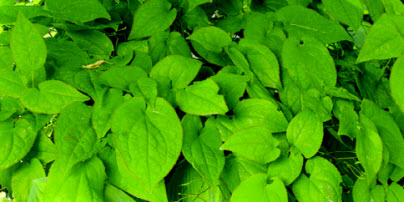We insist on planting under our trees and then wonder why we have to deal with tree roots. It’s a natural fact of the garden life, especially if you are fond of shade gardens.
Most tree roots exist just under the surface of the soil in the top eight to 10 inches, which is just where we want to plant our prize hosta. But if you were a tree, you’d want to occupy this prime real estate too, because it is here that air, moisture and nutrients are most accessible.
In a flowerbed, these roots can be a nuisance for the gardener who may also suffer bouts of doubt and a guilty conscience about disturbing the tree roots and cutting through them.
Don’t feel guilty.
Most trees can handle a bit of root disturbance and pruning (bur oaks can be an exception), and the tree may even prosper from some light pruning. Just as in the branches above, pruning encourages more growth, providing more opportunity for the tree to take up sustenance.
Plant perennials to avoid having to disturb roots year after year.
You may also be helping the tree by aerating the soil, amending it with health giving organics and perhaps even fertilizers. The tree is a happy host.
Some trees will let you know if they resent this kind of competition. Walnut or other members of the Juglans family, such as butternut, defend their territory by sending out killing chemicals that will soon discourage your gardening efforts in that vicinity.
Caution: be careful about adding large amounts of top soil over a tree’s roots zone. This can smother the tree, depriving it of oxygen.
The herbaceous plants you are introducing may not be as lucky as the tree. In addition to attacks from the species just mentioned, competition for moisture can be a real problem, especially for water-loving plants such as hosta. You may find yourself needing the hose in these flowerbeds more often than you wish.
Still, it’s often worth the effort to plant under a tree. Your herbaceous plants can benefit from the fallen leaves and we have already discussed how the tree manages.
As well, by introducing more moisture to the feeder roots of the tree, you may prevent the roots from coming to the surface and interfering with your lawn in dry years. In fact, if you are running into problems with tree roots at surface level, it is probably due to a lack of water. Water more frequently and more deeply. Shallow watering encourages all roots — trees, perennials and lawn grass — to linger near the surface where they are vulnerable to drought and other damage.
And yes, you can introduce shade-loving shrubs to the flowerbed under a large tree. While there will be competition for moisture and nutrients, there are also symbiotic relationships. Have you ever seen a healthy forest with no understory?
Contrary to popular belief, tree roots will not force themselves into foundations or sewer lines. They will, however, exploit any leaks you have already in the sewer lines. When it comes to foundations, they will simply turn aside and grow in another direction when they hit a solid object, whether it be cement or a rock. The roots are looking for food and water. Like everything else, they will take the easiest path to find both.
If you are concerned that your lawn will suffer from the shade of a great tree, plant the appropriate grass in this area. There are shade-loving fescues on the market that thrive in shade. These fescues are also drought tolerant.



